With brands continually seeking to generate content that cuts through the noise, it’s no wonder that there’s a growing trend of top-rated movie and TV directors turning their hand to advertising.
Wes Anderson, Spike Lee and Ridley Scott have all applied their trademark cinematic style to create ads for some of the world’s best-known brands – Apple, American Express and Levi’s to name a few.
Our shooters are no Wes Andersons, but for every visual content project we work on at Fuller we carefully consider many production aspects before shoot day to ensure a high-quality output – taking into consideration lighting, sound, production design, editing and more.
So, no matter the type of visual content you’re creating – corporate video, television commercial, Instagram story or product photo shoot – learning about various cinematic techniques can dramatically enhance the quality of your content.
And what better way to do that than going behind the scenes of some very binge-worthy TV shows!
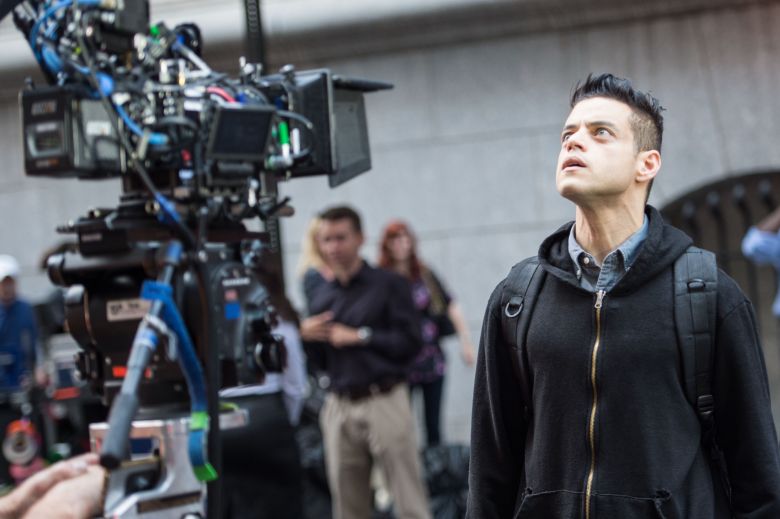
Rami Malek
‘Mr Robot’ on set filming, New York, USA – 16 Aug 2017
1. Cinematography, composition and framing: Mr. Robot
Released in 2015, Mr. Robot is one of the most critically acclaimed series’ in recent years.
Filmed in New York, this drama/thriller, written and produced by Sam Esmail is a tribute to hacker culture told through the eyes of cyber-vigilante Elliot (Rami Malek) and his quest to cancel consumer debt through the creation of hacktivist organisation ‘fsociety’. Elliot’s character is constantly struggling with a grip of mental disorders that lead to paranoia and delusion.
In Mr. Robot, the world itself is a main character.
Cinematographer Tod Campbell uses symmetry, complex camera movements and unconventional framing choices to make the character’s emotions and stories less significant, and instead put us, the viewer, in their world, asking us to face the same problems.
This cinematography is a great example of how what fills the frame – and where it is placed – can go a long way to telling us which emotion to feel: in this case, confused, detached and alone in a world where data is king.
You can binge seasons one to three of Mr. Robot on Amazon Prime…and if you like what you see, the fourth and final season is due to be released in Spring!
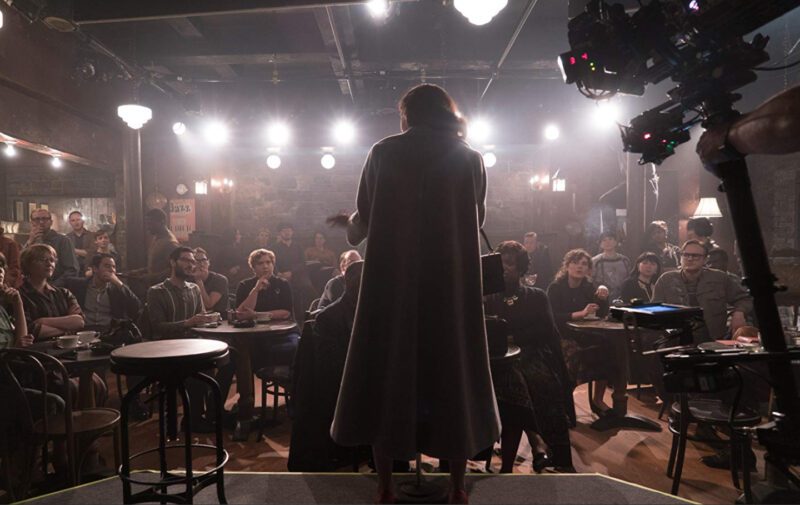
2. Production design: The Marvelous Mrs. Maisel
In stark contrast to Mr. Robot, we’re turning back the clock to more kitsch and colourful times, exploring the outstanding production design in The Marvelous Mrs. Maisel.
Set in the 1950’s on the Upper West Side of New York, The Marvelous Mrs. Maisel is the story of a housewife who aspires to be a stand up comedian.
Technically, ‘production design’ refers to costume and set design – but we think it encapsulates much, much more. It brings to life a time and place, as well as reflecting important themes and plot developments.
In The Marvelous Mrs. Maisel, every detail is meticulously thought-out, and as periodically accurate as possible.
From costumes and colours, elaborate sets and locations to the tiniest props such as cups, pencils and recognisable 50’s products, Mrs. Maisel’s world transports us to a time once been, and most importantly, contributes to how the story is told in a way other techniques cannot.
Immerse yourself in the world of The Marvelous Mrs. Maisel on Amazon Prime.
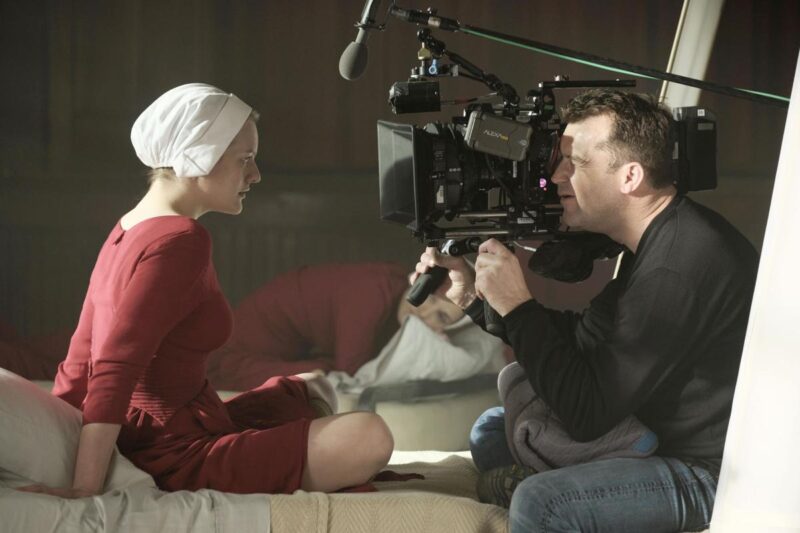
3. Music: The Handmaid’s Tale
For a TV series based in a time and location where music is outlawed, you might be surprised by how crucial music is to the narrative of this award-winning show.
Based on Margaret Atwood’s 1985 novel, the television adaption of The Handmaid’s Tale has been brought to the screen by Bruce Miller and music supervisor Maggie Phillips.
Set in a dystopian future following a fictional second American Civil War, the series focuses on the life of a ‘handmaid’, June – essentially, a concubine forced to exist as a childbearing slave for the wealthiest families within a fundamentalist theocratic dictatorship.
…yeah, this show is incredibly morbid, dark and unfamiliar! But in contrast, the majority of the music is upbeat and iconic.
The Handmaid’s Tale features everything from Belinda Carlisle’s ‘Heaven is a Place on Earth’, to Bruce Springsteen’s ‘Hungry Heart’, Phillip Glass’ remix of Blondie’s ‘Heart of Glass’ and Leo Sayer’s ‘You Make Me Feel Like Dancing’.
Whether the music has a source in the world of the show (what we call ‘diegetic sound’) – through characters listening to radio, cassette tapes, vinyl records – or is only heard by viewers to accent what is seen on screen (non-diegetic sound), it is used as a story-telling technique to shock us.
But why has this music been chosen if it is such a harsh juxtaposition to the show’s themes and narrative?
It’s because it creates a visceral reaction.
Placing a song we know in this context makes it shocking, menacing, creepy and absurd. It highlights the emotional weight of the show and gives the dystopian future a real-world context.
You can check out The Handmaid’s Tale on SBS On Demand or Stan.
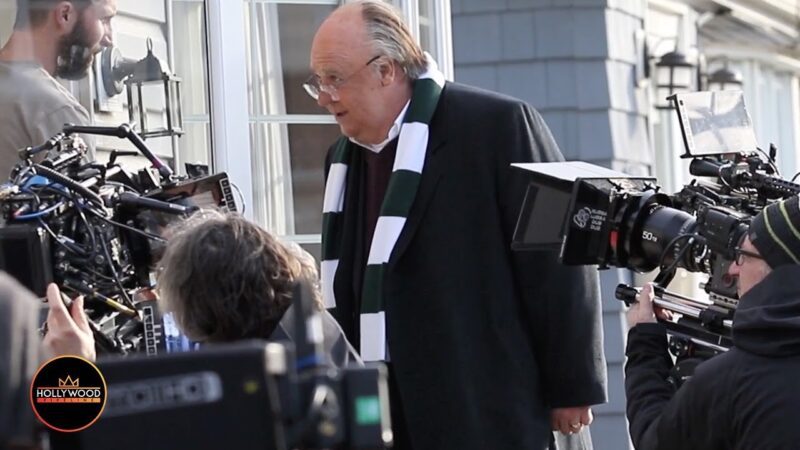
4. Editing: The Loudest Voice
Another TV show based on a best-selling book has made it onto our list – this time, for its editing style.
The Loudest Voice – released in May this year – takes us into the world of ruthless television executive and media consultant, Roger Ailes. The series focuses on the final decade of Ailes’ life, where he built Fox News from the ground up and arguably became one of the biggest political influencers in North America.
Played by Russel Crowe, Roger Ailes lives in the world of television. Many of the editing decisions made throughout the series contribute to the formation, and our understanding of this TV-centric world.
The opening credits are a litter of news-screens and geo-political events intercut with transmission signals and glitches. New characters are introduced with pixelated title screens, reminiscent of damaged VHS and early 90’s music videos.
We think one of the best editing techniques used throughout the show is subtle jump-cutting – a quick flick back-and-forth between the current scene and the next before completely changing scene.
This brief time jump foreshadows what is to come, links character decisions to world repercussions, and is reminiscent of the way viewers flick between channels on TV. It exemplifies the power of editing for building story.
Watch The Loudest Voice on Stan.
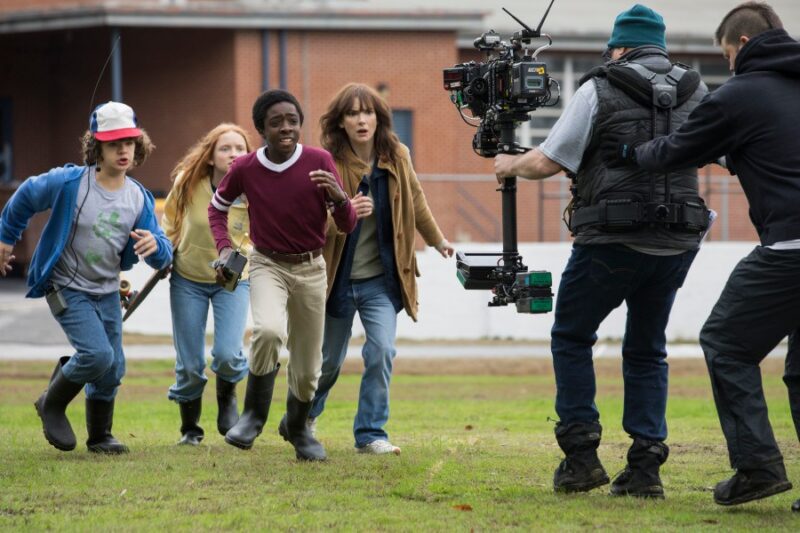
5. Lighting and colour grading: Stranger Things
Finally, it wouldn’t be a list of ‘best TV shows’ without Stranger Things.
Season three of this highly-bingable, well-loved Netflix series from American writer/director/producer team the Duffer Brothers dropped last month.
Blending science-fiction, horror and 1980’s blockbuster tropes with winks and nods to the works of Steven King, Steven Spielberg and John Carpenter, the series is set in the 80’s in the fictional American idyllic town of Hawkins, Indiana.
Stranger Things is a coming-of-age action and adventure story following a group of children, their families and the supernatural events that engulf their lives.
Critical to the phenomenal success of the show is the lighting and colour grading.
Given the show is a period drama, the lighting team and colourist ensure the scenes stay true to the period as well as the show’s themes – and the lighting and colour-grading used achieve a cinematic look, reminiscent of 80’s and early 90’s film classics.
You might have also noticed that the scenes are full of practical lighting – think torches, Christmas lights, neon signs and lights within Hazmat suits. In the 80’s this was done out of necessity, but in Stranger Things, it is purely a stylistic choice.
Turning to the colour palette, you’ll notice lots of brown and teal tones with red as an accent colour – with all colours graded for high contrast and saturation.
The safety of the kids’ home is full of warm golden light, while the intrusive and cliché shopping mall is drenched in saturated colour.
As the story unfolds, the scenes become darker, colder, and blue light is used. The lights constantly strobe and flicker as the intensity grows. A change in lighting and colour can also be noticed the older the children get, and with the small American town’s invasion and decay.
In these ways, the story is told through light and colour, as well as in the action. Stranger Things is available to watch on Netflix.